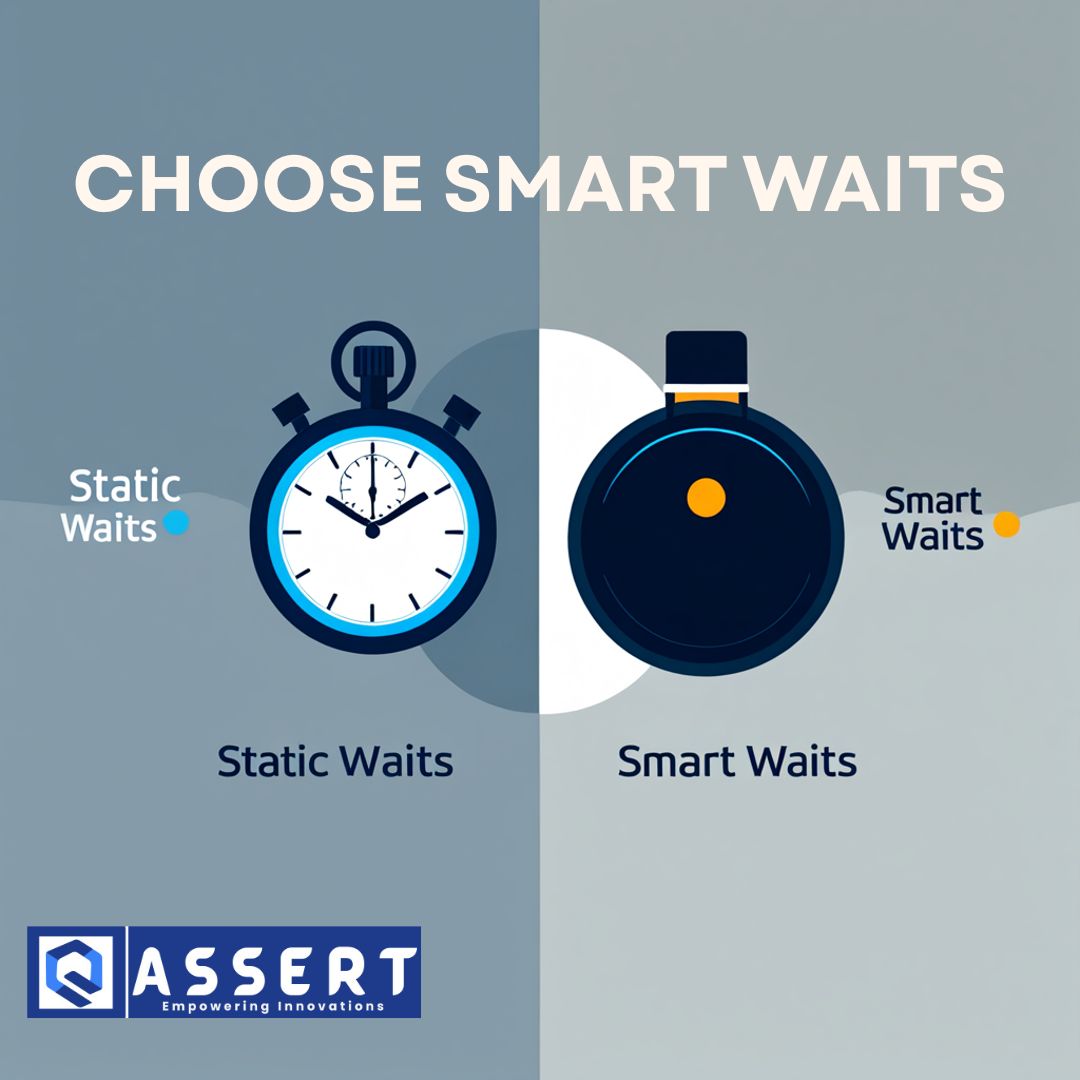When building automated tests, waits are essential to ensure the application has loaded or elements are ready before interaction. Many beginners use static waits, but these can slow down tests. Smart waits (also called dynamic waits) can make automation faster and more reliable. Let’s see how.
What are Static Waits?
Static waits are fixed pauses in test execution using commands like Thread.sleep(5000) in Java or time.sleep(5) in Python.
- Advantages: Easy to implement.
- Disadvantages: Wastes time if the element loads faster, can still fail if the element takes longer than expected.
Example in Java (Selenium):
Thread.sleep(5000); // Waits 5 seconds no matter what
What are Smart Waits?
Smart waits (dynamic waits) wait only as long as necessary. They keep checking if the element is ready, and as soon as it is, they proceed.
-
Advantages: Faster execution, more reliable tests, better handling of network delays.
-
Disadvantages: Slightly more complex to implement.
Example in Java (Selenium Explicit Wait):
WebDriverWait wait = new WebDriverWait(driver, Duration.ofSeconds(10));
wait.until(ExpectedConditions.visibilityOfElementLocated(By.id(“myElement”)));
Smart Waits in Playwright
Playwright automatically uses smart waiting for actions like click or fill.
Example:
page.click(“#submitButton”); // Waits until clickable automatically
When to Use Which?
| Feature | Static Waits | Smart Waits |
|---|---|---|
| Speed | Slow | Fast |
| Reliability | Low | High |
| Use case | Debugging only | Production test scripts |
Best Practices
- Always prefer smart waits over static waits.
- Use static waits only when debugging or simulating human delay.
- For Selenium, use Explicit Waits instead of
Thread.sleep. - In Playwright, rely on built-in auto-waiting.
Conclusion
Switching from static waits to smart waits is a small change that can make your automation intelligent, faster, and more reliable.




